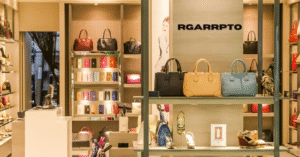1. Introduction
In the evolving world of modern materials, Sodiceram stands out as a high-performance ceramic that blends advanced engineering with sustainability. Emerging from materials‑science innovation, Sodiceram offers a remarkable combination of durability, thermal stability, and environmental friendliness. Its applications stretch across architecture, industry, healthcare, art, and electronics—and its name even recalls a former French tile company. Let’s embark on a deep dive into Sodiceram’s origins, material makeup, advantages, applications, environmental credentials, challenges, and future directions.
2. What Is Sodiceram?
At its core, Sodiceram refers to a specialized class of sodium‑enhanced ceramic materials engineered using sodium oxide or sodium silicates combined with silica, alumina, and other stabilizing oxides. This composition produces a highly dense, low‑porosity structure with enhanced mechanical and thermal properties, far exceeding traditional ceramic performance.
There’s also a historical usage of the name: Sodiceram was once a French tile and sanitary‑ware retailer, Société de Distribution de Céramique, founded in Reims in 1979 and liquidated in November 2021. However, in contemporary materials science, “Sodiceram” refers almost exclusively to the modern sodium‑based ceramic.
3. Origins and Historical Development
The idea of sodium‑enriched ceramics began in mid‑20th century research, where scientists experimented with soda‑lime additives to traditional ceramic mixes. These efforts aimed to reduce firing temperatures while improving strength and reducing porosity. Over decades, refinements in chemistry and production transitioned Sodiceram from experimental beginnings into industrial reality.
Today’s Sodiceram arises from high‑precision laboratory and industrial processes. Kilns with tight temperature control, controlled sintering, and even digital/3D‑manufacturing techniques have made the material reliable, repeatable, and scalable.
4. Material Composition & Key Properties
Chemical Makeup
- Silicon dioxide (SiO₂) forms the ceramic matrix.
- Sodium oxide (Na₂O) or silicates promote vitrification, tighter grain bonding, and reduced porosity.
- Alumina (Al₂O₃) and minor oxides (MgO, K₂O, etc.) add strength, thermal stability, and toughness.
Physical and Mechanical Characteristics
- Low porosity: Resistant to water absorption, chemicals, stains; ideal for humid or corrosive environments.
- Thermal shock resistance: Can withstand rapid temperature changes without cracking.
- High compressive strength, though like most ceramics may be brittle under tensile bending.
- Lightweight relative to stone or porcelain, easing handling and installation.
- Excellent wear and abrasion resistance for high‑traffic or high‑stress surfaces.
Special Use Properties
Depending on formulation, Sodiceram can also feature electrical insulation or controlled conductivity, making it suitable for electronic and semiconductor applications.
5. Major Advantages
Durability and Longevity
Sodiceram’s dense sodium‑infused structure resists cracking, chipping, and wear—even under harsh industrial or architectural use. In many applications, it far outlasts traditional ceramic or masonry surfaces.
Thermal and Chemical Resistance
It tolerates extreme heat changes and exposure to alkalis, acids, oils, or cleaning agents without degradation, making it ideal for kitchens, laboratories, or industrial equipment.
Aesthetic and Design Versatility
Available in matte, gloss, textured, patterned, or large‑format panels, Sodiceram offers wide design freedom—from clean modern finishes to imitation natural stone or wood textures.
Eco‑friendly and Sustainable
Manufacturing processes often use recycled content, lower firing temperatures, and modern kilns with reduced emissions. The long lifecycles of Sodiceram products also minimize waste and resource use over time.
Lightweight and Low Maintenance
Its comparatively light weight lowers shipping and installation costs. The smooth, non‑porous surface cleans easily with mild soap and water and seldom requires sealing or repair.
6. Applications & Use Cases
Architecture & Interior Design
Ideal for floor and wall tiles, backsplashes, external facades, and decorative cladding. Its durability makes it a reliable choice for high-traffic or wet areas like bathrooms and kitchens.
Industrial and Manufacturing
Used in wear‑parts such as machine liners, bearings, and chemical plant components due to its resistance to abrasion, corrosive chemicals, and thermal extremes.
Automotive and Aerospace
In vehicles, Sodiceram serves as lightweight yet heat‑stable padding in brake or exhaust systems. In aerospace, it’s used for heat shields, turbine components, and engine linings where thermal shock resistance is essential.
Medical and Biocompatible Devices
Its chemical stability and compatibility with bodily fluids make it suitable for surgical tools, labware, implants, and dental prosthetics. It tolerates sterilization processes and resists long-term degradation.
Consumer Goods and Electronics
Used in cookware coatings (resisting scratching, staining), heat-resistant electronic parts, circuit board substrates, insulators, and battery or energy‑system casings.
Art and Design Installations
Artists and designers employ Sodiceram for durable sculpture, outdoor installations, public‑art panels, and long‑lasting functional decor thanks to its range of textures and finishes.
7. Environmental Impact
- Energy efficiency in buildings: its insulating properties reduce heating/cooling needs.
- Recyclability: ceramic waste can be reclaimed and reused in industrial filler or tile production.
- Low emissions during manufacturing using modern, efficient kilns and recycled feed stocks.
Together, these factors position Sodiceram as a sustainable alternative to high‑energy, high‑waste traditional materials.
8. Limitations and Challenges
Despite its strengths, Sodiceram comes with a few caveats:
- Higher upfront cost: precise chemical formulation, controlled firing, and advanced manufacturing raise initial expenses—though lower maintenance and replacement costs often offset this over time.
- Brittleness under tensile loads: like many ceramics, Sodiceram resists compression well but can fracture under bending or sharp impact conditions.
- Limited global adoption: currently produced by select specialist suppliers; widespread adoption in mainstream building or manufacturing is still evolving.
9. Future Trends and Innovation
Recent and emerging developments include:
3D Printing & Digital Fabrication
Advanced ceramic 3D printing, digital glazing, and water‑jet cutting enable custom architectural panels, complex components, and bespoke shapes with precision and reduced waste.
Nanocomposite Formulations
Embedding nanomaterials (e.g., graphene, carbon nanotubes) into Sodiceram could enhance tensile strength, thermal conductivity, and electrical performance for future applications in electronics, aerospace, and smart structures.
Smart Material Integration
Researchers envision Sodiceram components embedded with sensors or conductive pathways for uses in structural health monitoring, smart architectural panels, or aerospace systems.
10. Real‑World Examples
- A renovated public library’s entrance floor, installed with Sodiceram tile, retained its like-new look despite years of heavy foot traffic, thanks to its abrasion and stain resistance.
- A hospital installation used Sodiceram wall panels in hygiene‑critical areas. These panels resisted chemical disinfectants, maintained aesthetic appeal, and required minimal cleaning or upkeep.
- Aerospace and automotive manufacturers implemented Sodiceram in thermal parts, reporting reduced wear and longer service life under high-heat conditions—particularly in turbines and brake‑exposed elements.
11. Choosing Sodiceram for Your Project
If you’re considering Sodiceram—whether for construction, design, or industrial use—here’s how to evaluate:
- Performance requirements: Evaluate expected temperature exposure, chemical contact, foot/abrasion traffic, moisture, or sterilization needs.
- Finish and format: Decide between polished, matte, textured, large‑format, or custom patterned panels.
- Regulatory standards: Ensure the product aligns with certifications required in medical, aerospace, or construction sectors.
- Supplier track record: Look for companies offering technical datasheets, sample testing, warranties, and installation guidance.
- Lifecycle cost: Examine total cost of ownership factoring in longevity, maintenance savings, and replacement cycles.
Conclusion
Sodiceram represents a modern leap in ceramic materials—built for resilience, sustainability, and design flexibility. From sodium‑infused science to stunning real-world use, it bridges functional performance with aesthetic versatility. While higher initial cost and supply limitations remain, ongoing research, 3D‑printing integration, and nanotechnology enhancements are positioning Sodiceram at the forefront of materials innovation. Whether used in architecture, industry, healthcare, or electronics, it’s shaping durable—and environmentally thoughtful—solutions for today and tomorrow.



